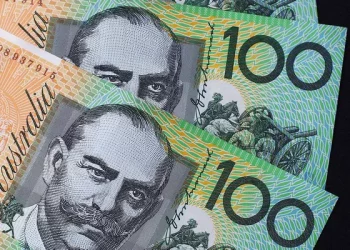The exchange rate between the Indian Rupee (INR) and the United States Dollar (USD) is a crucial factor in international trade, travel, and financial transactions. It determines the value of one currency in terms of the other. For instance, if the exchange rate is 80 INR per USD, it means that you need 80 Indian Rupees to buy 1 US Dollar. Exchange rates are not fixed; they fluctuate constantly due to various economic, political, and market forces.
As mentioned earlier, banks and money changers add a margin to the interbank exchange rate. This is how they make a profit. The margin can vary significantly, from a few percentage points to much higher, especially for small – value transactions.In addition to the exchange rate margin, some banks and online platforms may charge a flat – fee or a percentage – based fee for the currency conversion transaction. Make sure to understand all the fees involved before proceeding with the conversion. For example, an online currency exchange service might charge a 1% transaction fee on top of the exchange rate margin.
Factors Influencing the INR to USD Exchange Rate
Economic Indicators
Key economic factors like GDP growth, inflation rates, and interest rates play a significant role. When the Indian economy grows rapidly, it often attracts foreign investment. This influx of dollars increases the demand for INR, potentially strengthening the Rupee against the Dollar. On the flip side, high inflation in India can erode the value of the Rupee. If prices in India are rising faster than in the US, the purchasing power of the Rupee decreases, leading to a depreciation in its value relative to the Dollar.
Political Stability
Political events and stability also impact currency exchange rates. A stable government in India can boost investor confidence. For example, when there is a clear and business – friendly government in power, it encourages foreign companies to invest in India, increasing the demand for INR. In contrast, political unrest, policy uncertainties, or sudden changes in government can make investors wary, leading to a sell – off of Indian assets and a weakening of the Rupee.
Global Market Trends
The USD is considered a global reserve currency, and its value is influenced by global economic trends. During times of global economic uncertainty, investors often flock to the safety of the US Dollar, causing it to appreciate. This, in turn, can lead to the Indian Rupee depreciating. Additionally, fluctuations in the price of commodities, especially oil (as India is a major oil importer), can affect the Rupee – Dollar exchange rate. An increase in oil prices means India has to spend more dollars to import oil, increasing the demand for dollars and putting downward pressure on the Rupee.
Methods of Converting Indian Rupee to US Dollar
Traditional Bank Transfers
Most major banks in India offer currency exchange services. To convert INR to USD, you can visit a bank branch in person. You’ll need to provide proper identification, such as a passport or Aadhaar card. The bank will quote you an exchange rate, which includes a margin for their services. While the rates may not be the most competitive, bank transfers are a secure option, especially for large – value transactions. For example, if you’re a business owner sending money abroad for imports, you can rely on the bank’s transfer process.
Online Banking
Many banks now allow customers to convert currency through their online banking platforms. This is a convenient option as you can do it from the comfort of your home or office. You simply log in to your account, select the currency conversion option, enter the amount of INR you want to convert, and confirm the transaction. However, like in – branch transactions, the exchange rates may not be as favorable as other options.
Currency Exchange Services
Authorized Money Changers
These are private entities that are authorized by the Reserve Bank of India to exchange currency. They usually offer more competitive exchange rates compared to banks, especially for smaller amounts. You can find them in major cities, often in commercial areas, airports, and tourist hubs. When using a money changer, make sure they are authorized and check their reputation. For example, you can read online reviews or ask for recommendations from friends or colleagues.
Online Currency Exchangers
There are several online platforms that specialize in currency exchange. They often provide better rates than traditional methods. To use these services, you create an account, upload the necessary identification documents, and transfer the INR amount you want to convert. The exchanged USD will then be transferred to your designated bank account. Some online exchangers also offer features like rate alerts, allowing you to lock in a favorable rate when it becomes available.
Peer – to – Peer (P2P) Platforms
P2P platforms connect individuals who want to exchange currencies directly. This can potentially offer more competitive rates as there is no intermediary taking a large margin. However, it comes with risks. You need to be cautious about the authenticity of the other party. Make sure to use secure payment methods and verify the identity of the person you’re transacting with. Some P2P platforms have built – in security features, such as escrow services, to protect both parties during the transaction.
Tips for Getting the Best Exchange Rate
Compare Rates
Don’t settle for the first rate you see. Take the time to compare rates offered by different banks, money changers, and online platforms. You can use currency comparison websites that aggregate rates from various sources. This way, you can identify the most favorable option for your currency conversion. Avoid Airport Exchanges Currency exchange counters at airports typically offer the least favorable rates. They know that travelers are often in a hurry and may not have the time to shop around. If possible, exchange a small amount of currency at the airport for immediate expenses and look for better rates in the city.
Time Your Transaction
Keep an eye on the market and economic news. If you notice that the Rupee is strengthening against the Dollar due to positive economic developments in India, it might be a good time to convert your INR. Similarly, if there are signs of the Dollar weakening globally, you could potentially get a better deal If you need to convert a large amount of money, you may be able to negotiate a better rate with the bank or money changer. They are often more willing to offer a lower margin for significant transactions.
Conclusion
Converting Indian Rupee to US Dollar involves understanding various factors that influence the exchange rate, exploring different conversion methods, and being aware of fees and charges. Exchange rates are highly volatile and are affected by a combination of economic, political, and global market forces. When choosing a method of conversion, it’s essential to compare rates, consider the convenience and security of the service, and be mindful of any associated costs. Whether you’re a traveler, a businessperson, or an investor, being well – informed about the currency conversion process can help you get the best value for your money. By following the tips and information provided in this article, you can make more informed decisions when converting Indian Rupee to US Dollar, ensuring that your financial transactions are carried out smoothly and cost – effectively.
Related topics

























